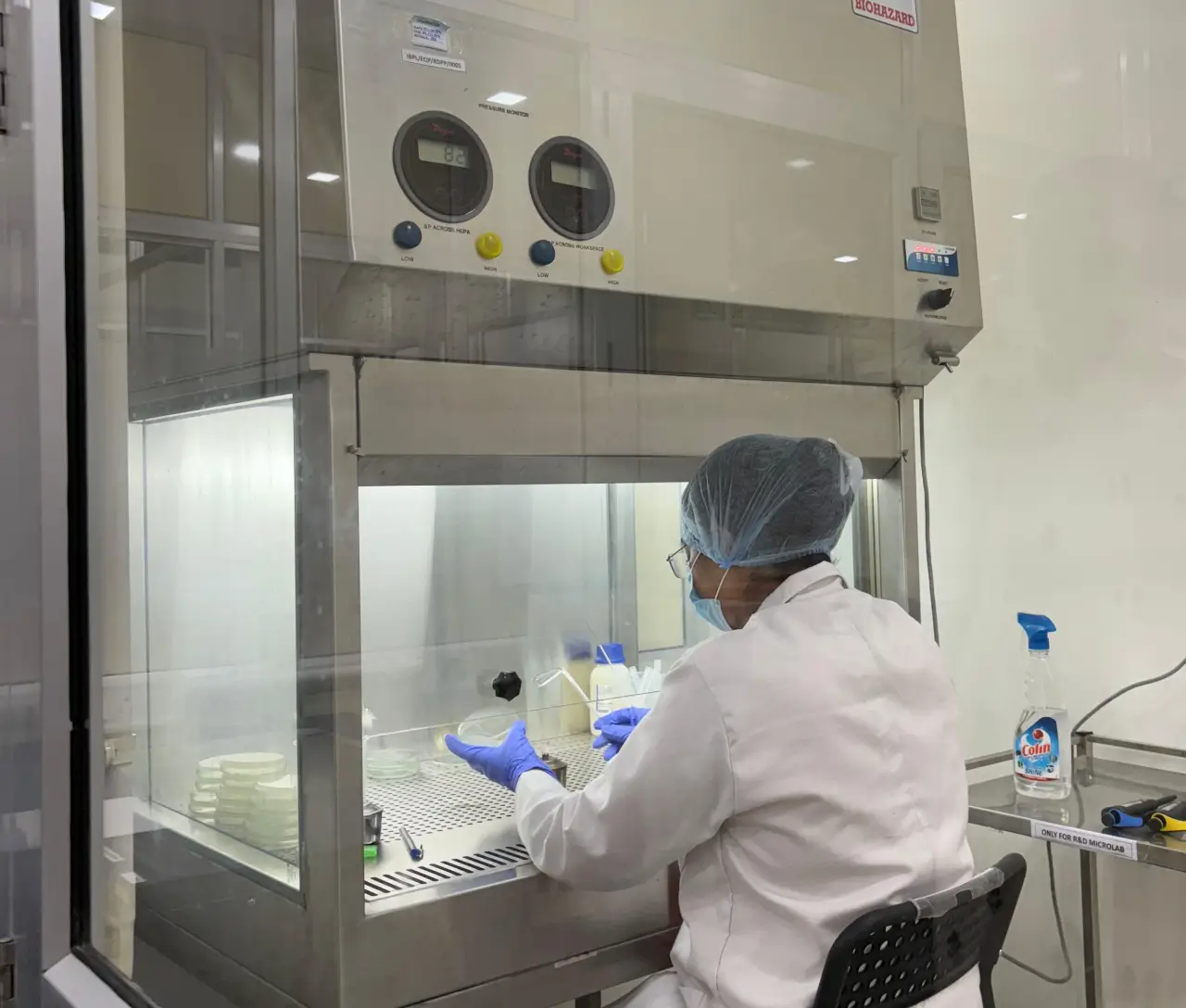What Are Industrial Enzymes? Types Of Industrial Enzymes
Living organisms from man to bacteria are maintained by biological catalysts called enzymes. Enzymes are made from proteins and have been evolving over millions of years to perform very specific biochemical jobs. Some enzymes are responsible for building chemical compounds up while others are responsible for either breaking them down or modifying compounds. These reactions include the breaking down of chemical bonds. The role of enzymes is to make sure these reactions occur much faster and hence they are referred to as catalysts. The great potential applications of enzymes were first recognised and exploited by industrialists. This is because they realised that if they could speed up the rates of reactions, then production processes could be done in lesser time than normal. In fact. These reactions could even be performed at lower temperatures and low pressures. In the 21st century, the global market for industrial enzymes has grown rapidly and is worth more $2 billion per year. This is due to the fact that using enzymes is considered a cost-effective and environmentally friendly practice. We have curated a list of five different types of industrial enzymes and their applications.
1. Carbohydrate Active Enzymes:
Applications of Enzymes In The Food Industry:
Starch, the principle part of numerous horticultural items, for example, corn (maize), potatoes, rice and wheat, is stored in plant cells as reserve material for living organisms. This sugar is the fundamental constituent of food items, for example, bread and other bakery items or is added to many foods because it serves as a thickener, water binder, emulsion stabilizer, gelling agent and fat substitute. Starch granules comprise of two kinds of particles made out of – D-glucose units called amylose and amylopectin. Extending the functionality of starch is accomplished through synthetic or enzymatic alterations. The most significant strategies for enzymatic starch processing are the generation of cyclodextrins and the hydrolysis of starch into a blend of simpler sugars for the creation of syrups having various
structures and properties. These items are utilized in a wide assortment of staples: soft drinks, meats, stuffed items, frozen yoghurt, meats, ice cream, confectionary sauces, baby food, canned fruit, and so forth. The industrial degradation of starch is generally started by alpha-amylases (alpha 1,4-glucanohydrolases) an extremely basic catalyst in microorganisms. Starch hydrolysing enzymes assume a noteworthy role in the processing of few raw food materials, particularly in the brewing and baking industries just as in the generation of soft drinks and alcohol. Enzymes that are required for aforementioned purposes are typically natural constituents of raw food materials, for example, alpha and beta amylases in flour, or are sourced from malt or different preparations from higher plants and microorganisms.
Cellulases In The Textile Industry:
Cellulases are broadly utilized in the textile business for the manufacturing and finishing of cellulose-containing materials. These enzymes are devices for improving essential processing steps in material production and making new kinds of texture. Current business applications incorporate bio-finishing of cotton and other cellulose-based fibres and their utilization in detergents. In the detergent business, cellulases are utilized to give cleaning and fabric care advantages, for example, the brightening up of colour in faded clothes by removing fluff. A wide assortment of microorganisms and fungi produce cellulolytic compounds of differing attributes.
Cellulases are hydrolytic chemicals and catalyze the breakdown of cellulose to smaller oligosaccharides and ultimately glucose. Conventionally, blue denim pants are dyed with indigo blue and the stone-washed finish which provides a faded or worn appearance is accomplished generally with pumice-stones. In huge measure, cellulases now supplant the pumice stones to accomplish an aged and washed-out appearance. This procedure is called bio-stoning and is presently the chief procedure utilized in the denim finishing industry. Cellulases can likewise be used in fabric and clothing finishing industry to deliver higher-value items. Cellulase treatment for the finishing of cellulose-containing textile materials, for example, cotton, hemp, lyocell, rayon, linen and thick materials are called bio-finishing or biopolishing.
2. Peptidases:
Proteases, which solidly keep up the lead position on the world enzyme market, play a significant job in biotechnology. The cysteine proteases of plants and animal cathepsins are of significant business significance because of their solid proteolytic action against an expansive scope of protein substrates.
Beer And Alcohol Production Industry:
Light and clear lagers are favoured by purchasers. Various ingredients utilized during beer manufacturing include proteins which form insoluble complexes that show up as a perpetual haze. At the point when the brew is cooled the insolubility increments and cause a more intense haze known as chill-haze. Treatment with a proteolytic enzyme (typically unrefined papain or bromelain) brings about a lager that remains parts clear and bright when chilled. Enzyme serum is additionally phenomenal as a wort clarifier.
Baking Industry
Proteases are used in the baking industry since dough might be arranged more rapidly if the gluten it contains has been halfway hydrolysed. At the point when high-gluten assortments of wheat are utilized the gluten must be extensively degraded for making biscuits or forestalling shrinkage of commercial pie pastry. Bromelain has been generally utilized in the heating business on account of its fast rate of reaction, broad pH and optimal temperature and its absence of amylase or pentosanase side activities. Protease treatment improves dough relaxing and bread volume prevents the dough from shrinking and permits quicker bakery throughput.
Leather Industry
The bating of leather is a strategy which happens before tanning and is utilized to furnish hides and skins with the imperative flexibility and delicate quality. Bating materials, which contain proteases, fill this need by separating the proteinaceous material of skins and hide. Notwithstanding, the proteolytic activity should just be permitted to proceed to a particular level to avoid the destruction of the basic structure of the leather. Furthermore, papain additionally serves as a de-hairing agent.
3. Lipases
Early reports on the creation by both bacterial and eukaryotic cells of enzymes able to degrade lipid substrates date to over a century back. From that point forward, research on lipolytic enzymes – that incorporates lipases, esterases, phospholipases – has been driven by their focal jobs in lipid digestion and in signal transduction. Lipases are commonly adaptable compounds that accept a wide scope of substrates (for example aliphatic, alicyclic, bicyclic and aromatic esters, thioesters, activated amines) while keeping up high regio-, chemo-and enantioselectivity. The stability of most lipases in natural solvents makes way for their use in organic synthesis: in esterification, transesterification, aminolysis and aminolysis responses. Such properties make lipases key players in the industrial enzymes division. Lipases are used in the detergent industry to degrade fatty substances.
4. Nucleic Acid Enzymes
The chief capacity of DNA polymerases is to duplicate DNA utilizing one of its strands as a format and using small fragments of DNA or RNA as primers for prolongation from the 5′ end to the 3′- OH end. Notwithstanding this capacity, DNA polymerases are likewise associated with the upkeep of genome integrity during DNA replication, DNA repair, homologous recombination, sister chromatid attachment, cell cycle checkpoints and the development of the immune system. PCR technology permits the usage of very small specimens of genetic material, even from only one cell, replicating it more than once to produce a test sample adequately intensified to be able to recognize the presence or absence of a viral, bacterial or other specific DNA sequence. It is essential for the enhancement of DNA tests when there isn’t sufficient material accessible to examine by different techniques (for example DNA from crime scenes, archaeological examples, and so forth).
In The Medical Industry
Medical diagnosis: PCR can recognize and distinguish microorganisms and infections that cause contaminations, for example, tuberculosis, chlamydia, viral meningitis, viral hepatitis, HIV, cytomegalovirus and numerous others. When primers are produced for a particular sequence, PCR can distinguish the presence or absence of the corresponding pathogen in a patient’s blood or tissues. Genetic testing: PCR is likewise used to decide if patients carry a gene mutation that could be acquired by their offspring (for example the mutation that causes cystic fibrosis) or present a disease risk in patients themselves (for example a change in the BRCA1 gene that inclines a lady to breast or ovarian cancer). Portions of the gene are amplified by PCR and afterwards sequenced to search for mutations.
5. Oxidoreductases
Industrial creation of redox biological catalysts like galactose, cholesterol oxidases and catalase is expanding quickly inferable from their established use in the development of biosensors and other novel applications, for example in the food and textile industries.
Food Microbiology And Sanitising Industry:
The well-contemplated bactericide impact of the GOx/glucose system by virtue of H2O2 generation might be exploitable in the food industry to battle food contamination microbes. Combinations of the H2O2-creating and H2O2-devouring chemicals GOx and CAT are likewise injurious for vigorous microorganisms in view of the quick consumption of accessible oxygen and subsequently can be utilized as antimicrobial specialists. GOx has been utilized in baking to improve the quality of the gluten network through H2O2-activated permanent cross-linking of wheat batter proteins and to diminish the stickiness of enzyme-supplemented doughs.
Textile Industry
The modern use of CAT is wide-going on the grounds that its substrate, H2O2, is often utilized as a strong biocide, oxidant and bleaching specialist in the textile, pulp and paper, wood, food industries. Bleaching with H2O2 in the textile industry is performed in the wake of desizing and scouring, yet before dyeing. CAT is presently used to break down abundance H2O2 and consequently adds to decreasing water utilization (no repeated rinsing), the avoidance of loading wastewaters with pollutants (like derivatives of Na2S2O3 or KMnO4), and it causes the dyeing procedure to be performed legitimately in CAT-treated rinsing baths.
This concludes the list of the five different types of industrial enzymes and their industrial applications. Of these enzymes proteases and amylases are the most prominent enzymes as they are useful in many different industries. However, the prominent industries that use these enzymes are the food and textile industry. Apart from these, even the medical field uses some of these enzymes.







